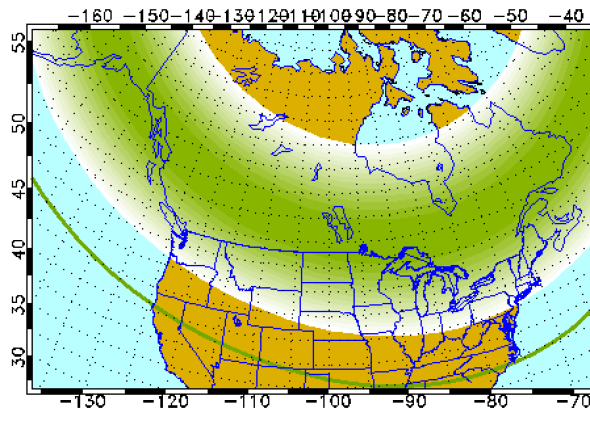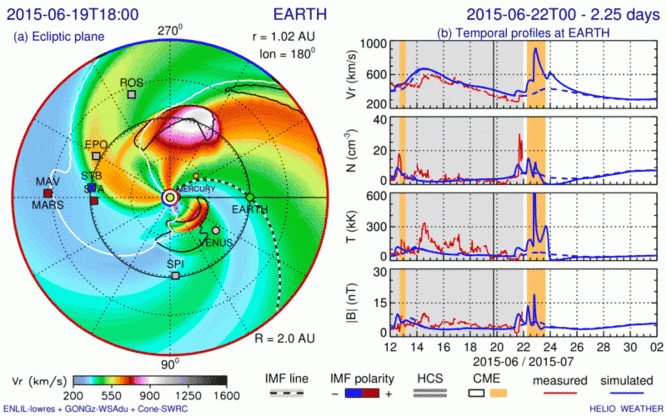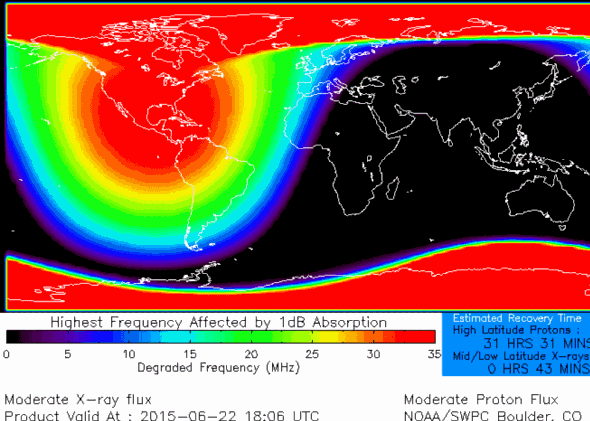Thanks to an “impressive” solar explosion over the weekend, a dazzling display of Northern Lights is possible Monday night across northern Europe and North America—rivaling some of the best shows in years.
On Sunday, the summer solstice, a major explosion on the sun propelled a coronal mass ejection toward Earth at about 4 million miles per hour. It then swept up two smaller, slower coronal mass ejections from last week, creating one big smorgasbord of geomagnetic exuberance. The whole mess reached Earth Monday afternoon with a bit more energy than expected.
The Northern Lights, also known as the aurora borealis, could be visible high in the sky as far south as New York City, Chicago, and Portland, Oregon, and might appear as a dull glow on the horizon in places like Oklahoma City and Charlotte, North Carolina.

The only bad news is, it’s coming on one of the shortest nights of the year.
That shouldn’t discourage you from heading out, though. This storm is of similar strength as the storm on March 17 of this year, where aurora were most impressive in Europe but also visible in Illinois, Ohio, and New Jersey. As an extra bonus, most of the country will be cloud-free on Monday night.
During the March 17 storm, the disturbance storm time index—a measure of the strength of the Earth’s magnetic field—reached peak levels for the current 11-year solar cycle. This storm has already just slightly eclipsed that one, though at a different geomagnetic observatory. The event could linger into Tuesday night if conditions are right.

The aurora is caused by interactions between the Earth’s magnetic field and charged particles blasted toward us by powerful explosions in the sun’s atmosphere. What causes these solar explosions isn’t well-understood by scientists, but they often occur near big sunspots.
The aurora themselves are totally harmless, but other associated effects from a particularly large geomagnetic storm like this one include radio outages, electrical power surges, and slightly less accurate satellite navigation. A truly monstrous geomagnetic storm, like the one that happened in 1859, could wipe out nearly every electrical circuit on whatever side of the Earth was unlucky enough to be facing the sun at that inopportune moment.
If you don’t see anything Monday night, try again Tuesday night. And if that fails, watch photos stream in from around the world on one of my favorite websites, spaceweather.com.

NOAA Space Weather Prediction Center